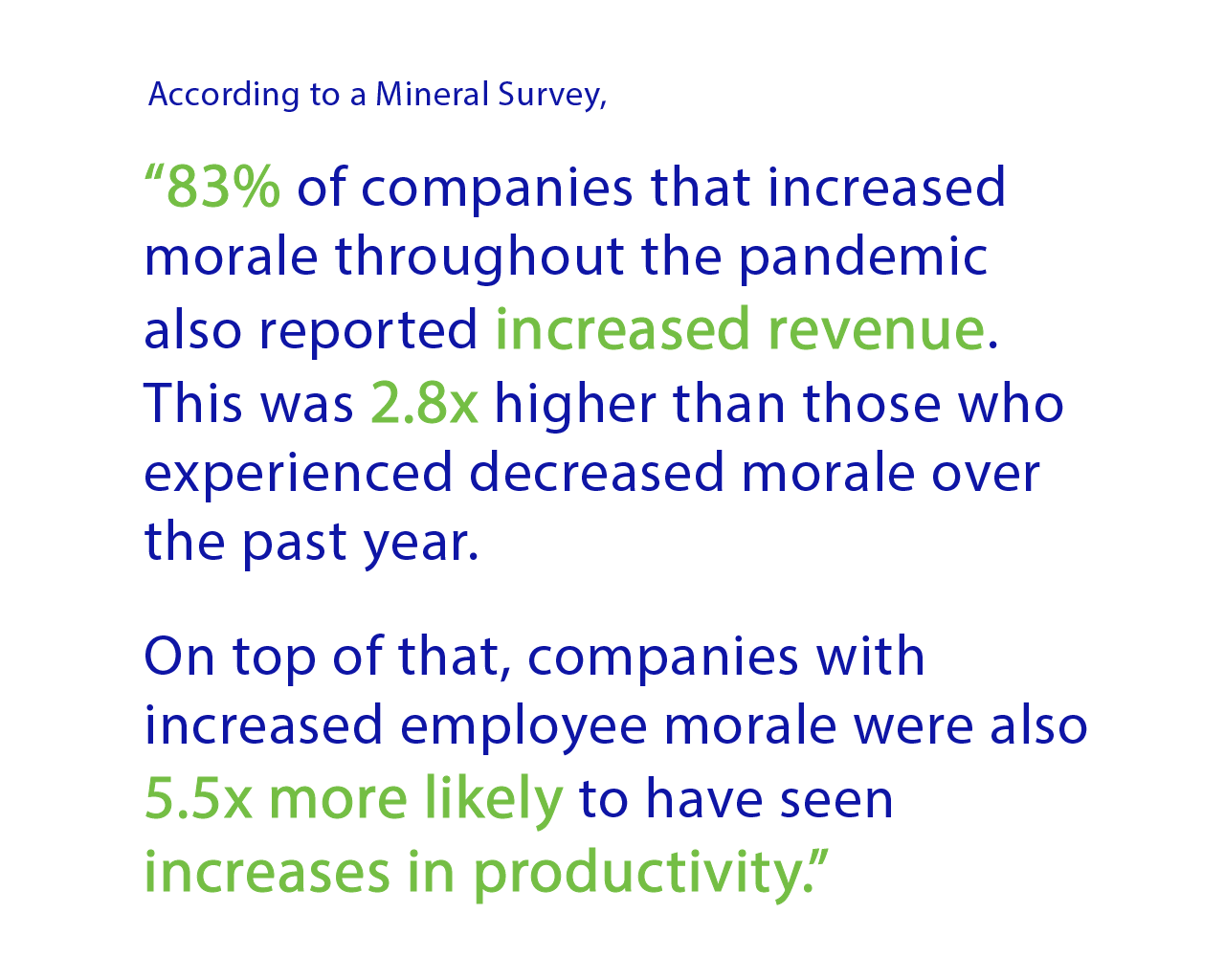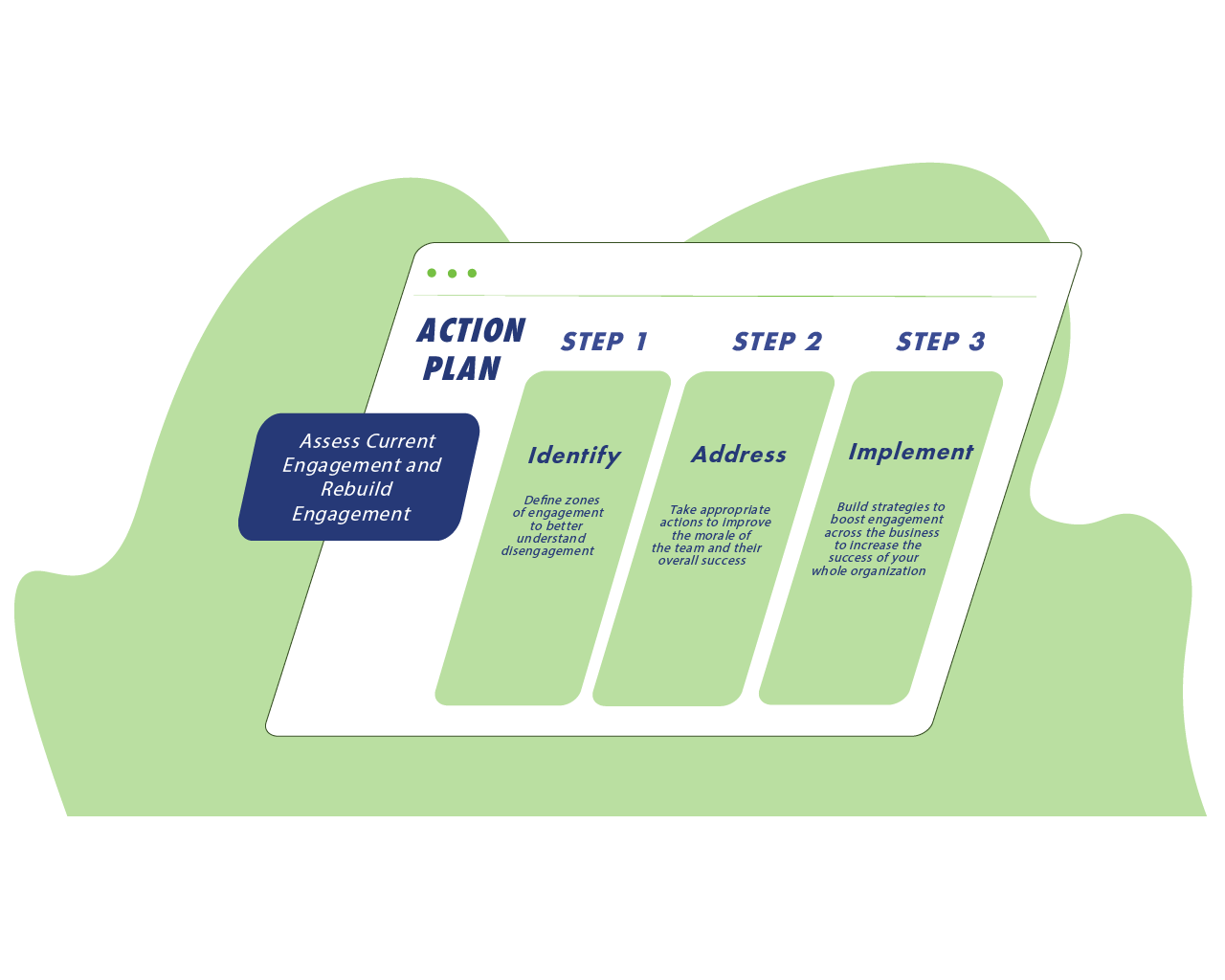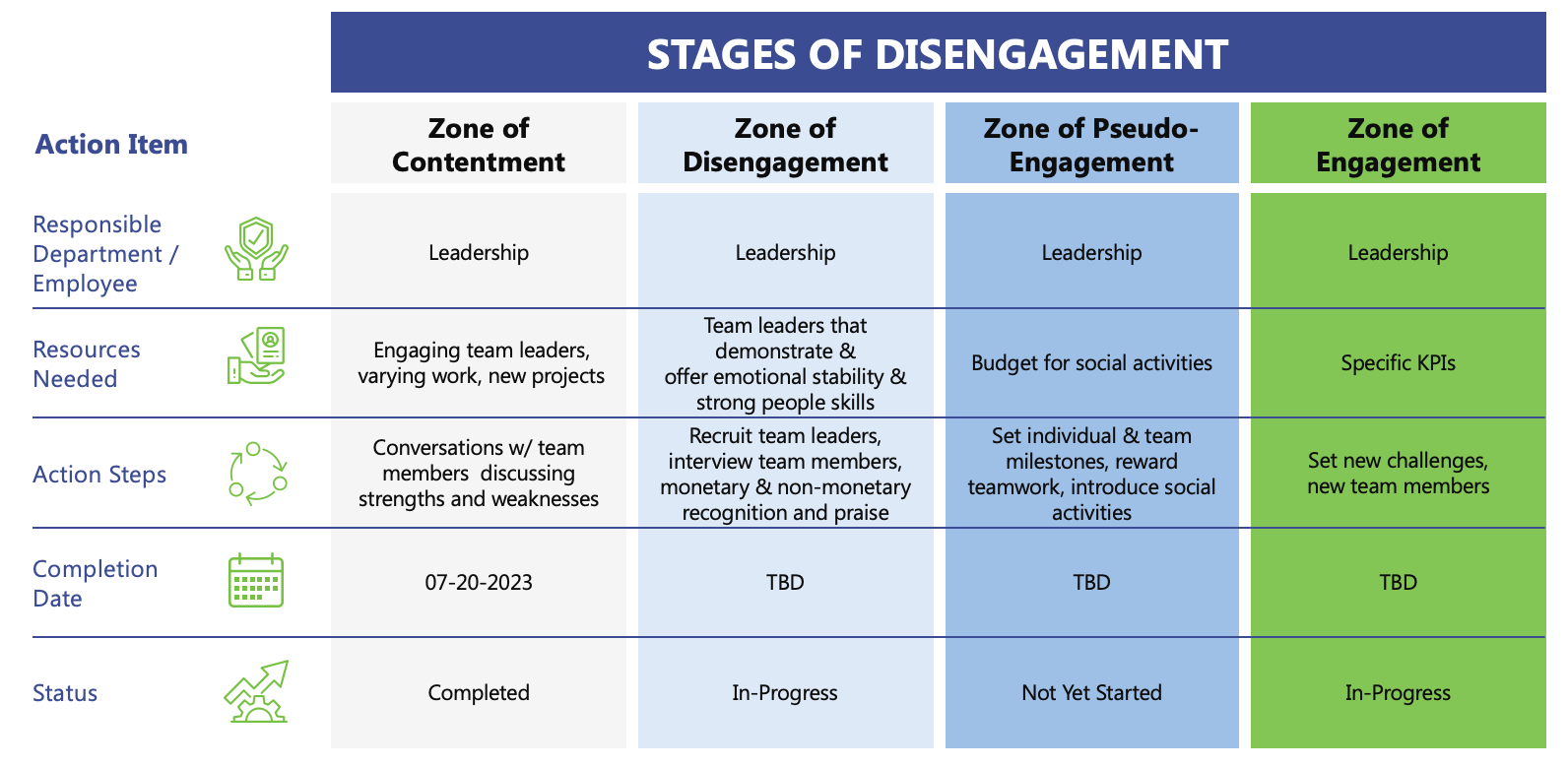In part 1 of this article, we identified burnout as a major underlying problem that resulted in the Quiet-Quitting and Great Resignation trend of 2022. Now, post-COVID organizational constraints have introduced a lot of new challenges.
Shifting and increased workloads, the need for employee recognition, lack of growth opportunities, ever-changing deadlines, prolonged periods of high stress with no end in sight, or lack of work-life flexibility can deteriorate employee morale and result in disengaged and unproductive teams.
Why should this matter to your organization?
Research shows that there is a strong connection between strong employee morale and increased revenue and productivity. Higher team engagement results in lower turnover, greater customer advocacy, and double net profit. Strong organizations prioritize the well-being of their employees and spend the most energy on efforts to sustain employee mental health, increase morale and provide opportunities for training and development.
It goes without saying that managers and leaders need to be able to identify sources of disengagement and know how to rebuild engagement to improve and strengthen morale and secure sustainable long-term success. What actions can your organization take to identify, address, and implement strategies to build a stronger, more productive team?

STEP 1: IDENTIFY Engagement is usually categorized as either ‘Engaged’ or ‘Disengaged’, but new research conducted by Hult International Business School, found that there are four different stages of disengagement:
- Zone of Contentment. This is the zone where teams do the bare minimum then go home. They are usually ‘just there to earn a wage’ and the idea of going ‘above and beyond’ doesn’t cross their mind.
- Zone of Disengagement. Mistrust rules in this zone. Infighting between team members, gossip, cliques, and blame culture leads to team members who feel undervalued and disrespected.
- Zone of Pseudo-Engagement. True teamwork is missing in these teams. Team members will take initiative but only if it fits with their personal agenda. This zone is sneaky because from the outside, they might look like a ‘proactive’ team, but this often hides a negative team climate.
- Zone of Engagement. These teams are built on trust and mutual respect. Team leaders set high standards but ensure that team members are supported and empowered to reach their goals. These teams are deeply committed and connected to each other, and this shines through in their performance.
STEP 2: ADDRESS Although the study found that there are different stages of disengagement, the findings support previous research that found the main factors in engagement are the quality of leaders and the levels of trust and support within the team.
As a leader, the goal is to identify and address your team’s engagement levels through their actions and what they say. Leaders should implement the three key elements of engaging:
- Ensuring people are given challenging and varied work. By giving teams a challenge, it will encourage them to push themselves further, and by varying tasks, they will not get bored.
- Working with trusted colleagues. Working within a close-knit team with deep-rooted trust in each other enables them to support each other and encourages greater team spirit and engagement.
- Having a team leader who is trusted and leads by example. When a team leader demonstrates that they are prepared to do any task they ask their team to do, the morale of the team is bolstered further.
STEP 3 IMPLEMENT Now that you understand that there are ways to measure engagement, how can you improve your team’s engagement and increase revenue and productivity for your organization?
This in-depth action plan will help you quickly and effectively strategize steps to build engagement, trust, and productive teamwork based on levels of engagement within your teams.

The positive relationship between a company’s financial health and the well-being of its employees is undeniable.
Making sure teams are engaged is the only way to ensure that your company’s output and productivity are kept at a high level. Understanding disengagement gives leaders strategies to improve the morale of the team, avoid burnout and resignation, and drive strong sustainable progress forward.
In summary, disengaged and unproductive teams hurt your organization but the more you prioritize employee well-being, the more likely you will be to have sustainable growth.
Whatever the future holds, leaders who invest in employee well-being today will increase the odds of their organization’s success tomorrow.
Don’t wait until tomorrow to lead smarter to grow stronger.
______________________
About the Study
Mineral partnered with a third-party research firm to conduct a survey of 2,644 senior HR professionals in the US through an online survey from February 4 – 24, 2022. Mineral engaged The Fossicker Group to provide the analysis, narrative, data visualization, and design for this report. Respondents were gathered through a mix of professional panels, Mineral clients, and social media channels. Respondents were predominantly executive leadership and had significant knowledge and involvement in their organization’s HR function. Companies of all sizes were included, ranging from smaller organizations of under 50 employees through to enterprise-sized organizations. The sample composition was balanced between five sectors: Consumer Goods & Services, Energy & Resources, Financial Services & Insurance, Life Sciences & Healthcare and Technology, and Media & Telecom.
___________________________________________________________________________________________
© 2023 SovranHR. May not be used for reproduction purposes in any way (e.g., to republish in a book or use for a commercial purpose) without SovranHR’s permission. To request permission for specific items, please contact us.
Article Sources
SovranHR requires writers to use primary sources to support their work. These include white papers, government data, original reporting, and interviews with industry experts. We also reference original research from other reputable publishers where appropriate.

Recent Comments